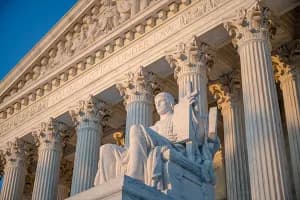
REALTOR® Peter Cagnassola is approaching 40 years in the real estate business. During those four decades, he has also maintained another job—as a volunteer firefighter.
Cagnassola, CRS, broker-owner of Bedminster Hills Realty in Pluckemin, N.J., began volunteering in his hometown of Martinsville, N.J., before joining the Far Hills–Bedminster Fire Department, where he has volunteered for the past 30 years. The fire station is 35 miles west of New York, not far from the home where he and his wife, Karen, who also is a REALTOR®, raised their two children.
“Softball,” Cagnassola jokes when asked what compelled him to volunteer. The reality, he says, is that he and his fellow volunteers are drawn by their desire and ability to help others. His years of service, including a term as fire chief in 1999, speak to the camaraderie among the men and women who work in circumstances that can be grueling and occasionally tragic.
There are parallels between the work of fighting fires and selling real estate. “In the heat of a negotiation, it’s critical to maintain a sense of calm,” says Cagnassola, who was once in REALTOR® Magazine’s ranking of the top salespeople in the U.S. based on sales volume. “It’s no different than when you roll up on a burning building. You never panic. You panic at a fire, and you risk losing a life.”
An estimated 65% of firefighters in the U.S. are volunteers, according to the National Fire Protection Association. NFPA says a total of 96 firefighters died of on-duty injuries in 2022; 51 of those were volunteers.

As he’s done each September for the past 22 years, Cagnassola last month reflected on the tragic events of Sept. 11, 2001, in which nearly 3,000 people were killed in terrorist attacks on the World Trade Center in Lower Manhattan. Among those killed were 343 firefighters and paramedics. This year, the New York City Fire Department announced that an equal number, 343, have since died from 9/11-related illnesses.
Following the collapse of the Twin Towers, Cagnassola and two other members of his crew—his brother, Thomas, and Mitch Patino—were drawn to Ground Zero to help with rescue efforts. They spent more than 48 hours helping to comb through debris in a fruitless search for survivors, he says.
A few weeks later, he received a call from a close friend whose daughter was serving as a U.S. Consul General in Sydney, Australia. She had received two helmets, inscribed by firefighters from New South Wales, Australia, with handwritten messages of sympathy and unity. She reached out to her dad for advice on how to get the helmet into the right hands; he recommended sending them to Cagnassola.
“I took them to a local cabinet maker in Bedminster. He put them on beautiful plaques and wouldn’t take money for it,” he says. “Since then, they’ve toured around. They go to fire academies for new recruits to see, and they’ve been on display in the county seat in Somerville to honor one of our own lost in 9/11.”
Cagnassola says he has never made a big show of the helmets or his own time spent at Ground Zero. But this year, after Newsmax asked him to tell his story on the 22nd anniversary of the attacks, he shared a remembrance on social media and was surprised by the outpouring of appreciation. “It was unexpected and incredible,” he says.
For Cagnassola, the helmets are a symbol of “the brotherhood among the emergency services community that transcends city, state and even national borders,” he says. “What unites us is wanting to help other people out.”










